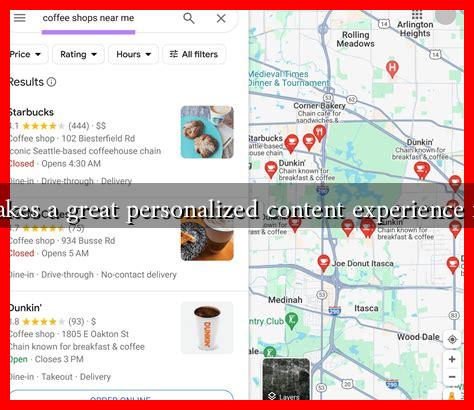-
Table of Contents
What Makes a Great Personalized Content Experience for Users
In today’s digital landscape, users are inundated with content. To stand out, brands must create personalized content experiences that resonate with individual preferences and behaviors. A great personalized content experience not only enhances user engagement but also fosters loyalty and drives conversions. This article explores the key elements that contribute to an effective personalized content experience.
Understanding Personalization
Personalization refers to the practice of tailoring content to meet the specific needs and preferences of individual users. This can be achieved through various methods, including data analysis, user behavior tracking, and machine learning algorithms. According to a study by Epsilon, 80% of consumers are more likely to make a purchase when brands offer personalized experiences. This statistic underscores the importance of personalization in modern marketing strategies.
Key Elements of a Great Personalized Content Experience
Creating a compelling personalized content experience involves several critical components:
- User Data Collection: Gathering data is the first step in personalization. This can include demographic information, browsing history, purchase behavior, and social media interactions. Tools like Google Analytics and CRM systems can help brands collect and analyze this data effectively.
- Segmentation: Once data is collected, it’s essential to segment users into distinct groups based on shared characteristics. This allows brands to tailor content to specific audiences. For example, an e-commerce site might segment users based on their shopping habits, such as frequent buyers versus occasional visitors.
- Dynamic Content: Dynamic content refers to content that changes based on user data. For instance, Netflix uses dynamic content to recommend shows and movies based on users’ viewing history, creating a more engaging experience.
- Contextual Relevance: Personalization should also consider the context in which users are engaging with content. For example, a user browsing a travel website might appreciate personalized recommendations based on their location or the time of year.
- Feedback Mechanisms: Incorporating feedback mechanisms allows users to express their preferences, which can further refine personalization efforts. Surveys, ratings, and reviews can provide valuable insights into user satisfaction and preferences.
Examples of Successful Personalized Content Experiences
Several brands have successfully implemented personalized content strategies that have significantly improved user engagement and satisfaction:
- Amazon: Amazon’s recommendation engine is a prime example of effective personalization. By analyzing user behavior and purchase history, Amazon suggests products that users are likely to buy, resulting in increased sales and customer satisfaction.
- Spotify: Spotify’s “Discover Weekly” playlist is tailored to individual users based on their listening habits. This feature not only keeps users engaged but also introduces them to new music they might enjoy, enhancing their overall experience.
- Facebook: Facebook uses sophisticated algorithms to curate news feeds that reflect users’ interests and interactions. This personalization keeps users engaged and encourages them to spend more time on the platform.
Challenges in Personalization
While personalization offers numerous benefits, it also comes with challenges:
- Data Privacy Concerns: With increasing scrutiny on data privacy, brands must navigate regulations like GDPR and CCPA while collecting and using user data.
- Over-Personalization: There is a fine line between personalization and over-personalization, which can lead to a feeling of being monitored. Brands must strike a balance to avoid alienating users.
- Technical Limitations: Implementing advanced personalization strategies often requires sophisticated technology and expertise, which can be a barrier for smaller businesses.
Conclusion
A great personalized content experience is essential for brands looking to engage users in a meaningful way. By leveraging user data, segmenting audiences, and delivering dynamic, contextually relevant content, brands can create experiences that resonate with individual users. However, it is crucial to navigate the challenges of data privacy and avoid over-personalization to maintain user trust. As the digital landscape continues to evolve, brands that prioritize personalization will likely see enhanced user engagement, loyalty, and ultimately, increased conversions.
For more insights on personalization strategies, you can visit Forbes.

